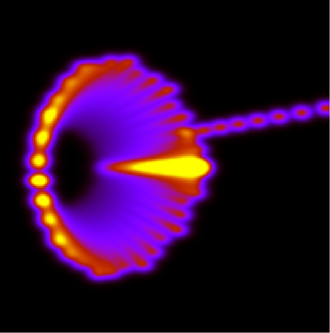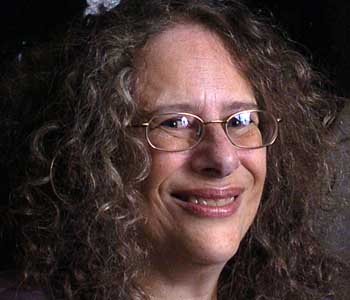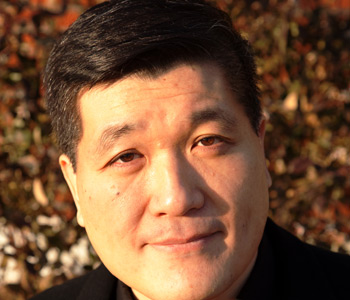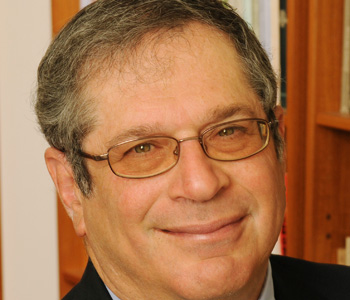Martin Bojowald
Once Before Time: A Whole Story of the Universe
Alfred A. Knopf
320 pages, 6¼ x 9¼ inches
ISBN 978 0307272850
Once Before Time explores questions about the nature of time and space, and whether or not they have a definite beginning.
Developments in physical theories (General Relativity, Quantum Mechanics, and attempts to combine them) have indicated that there is a deep connection between the history of the universe and the basic, microscopic nature of space and time, between the largest and the smallest scales.
In this book, I provide an exposition of Loop Quantum Cosmology, a detailed framework that has highlighted this connection, and its supporting arguments. Readers will be stimulated to fathom an unexpected link—the interplay between the big bang’s discrete atoms of space and the fundamentals of space and time.
The common myth of the big bang as the beginning of the universe and of time is based upon an illegitimate extrapolation of an incomplete theory.
The expansion of the universe out of an extremely dense state is supported by General Relativity, but a prehistory of the universe is not accessible unless quantum physics is considered, too. Reconciling General Relativity and Quantum Mechanics is a formidable challenge. It is considered the “holy grail” of contemporary cosmology. This problem keeps a large fraction of theoretical physicists occupied. And while a comprehensive theory of the universe is not yet available; this book attempts to provide an abbreviated snapshot of the endeavor’s current status.

The common myth of the big bang as the beginning of the universe and of time is based upon an illegitimate extrapolation of an incomplete theory.
Ten years ago, I wanted to understand and test the mathematics behind some of the theories already proposed at that time, especially in Loop Quantum Gravity. In the process, over several years, it turned out that the simplest way to test the mathematics was to look at the cosmological outcomes of the equations. Those cosmological solutions quickly and unintentionally showed the possibility of determining what happened before the big bang.
The book describes the results obtained in the meantime—and some of the personal experiences I had along the way. I outline a view of the universe’s nature and of time according to General Relativity, Quantum Mechanics, and Loop Quantum Cosmology.
For the reader to appreciate the endeavors of understanding the world on its largest and smallest scales, the book provides privileged insight into the concepts of relativity, space-time, quantum physics, black holes, and expanding universe. I also write about how science affects other fields of cultural inquiry.
General Relativity governs the entire universe and the vast distributions of matter within it. Quantum Physics is the realm of the very tiny individual particles and atoms. A combination of these two theories, called Quantum Gravity, allows us to see space-time in a quantized fashion.
The quantum universe of space-time is no longer unstructured and continuous, but more like matter, which is composed of small, discrete atoms. During the big bang, the universe was tiny, collapsed to nearly a single point. In this point, the arrangement of its space-time atoms determined the universe’s fate. By understanding the laws governing these spatial atoms, it may be possible to decipher the universe’s prehistory—the universe before the big bang.
Although spatial atoms are so tiny that they cannot yet be seen, theoretical physics has provided a strong line of arguments for their existence. The evidence is purely mathematical, but its consequences can be grasped intuitively.
The densest moment of the big bang is described as being a “State of Hell,” where the universe is infinitely hot and devoid of space. This state persists timelessly, for in it there is no space-time or change.
However, a single spatial atom’s disturbance of this situation implies that more and more spatial atoms will be generated and excited. As a result, space and time emerge, and the universe grows independently of matter.
Even after space had grown to the present cosmic scales, the atomic interplay may still have left a trace in the formation of structures we see today, such as the distribution of galaxies. In this indirect way, the notion of spatial atoms is empirically testable.
The book also outlines some of the predictions that could eventually be called upon to test Quantum Gravity.
Illustration of a model universe, spiraling out of nothingness (the so-called “State of Hell” of Loop Quantum Gravity) and then rapidly expanding to the right. The figure overlays states of the early universe at all times, characterized by its extension (vertical axis) and expansion rate (horizontal axis). Brighter colors correspond to states occupied more often. (Martin Bojowald)

This book contains a chapter on cosmology from a wide perspective. Before the scientific method was used to understand the universe, various cultures across the globe developed their own theories on the origins of the cosmos. The story began with myths and pre-Socratic philosophy, and continued until roughly one hundred years ago, when science became sophisticated and confident enough to answer many questions about the universe.
As opposed to science’s outward exploration of the cosmos, previous cultures relied on introspection, and projected their own cultural bias onto the universe. Using their cosmic models, we can appreciate human nature, and a less systematic approach to follow logical conclusions.
Even though we could view ancient ideas with condescension today, perceiving them as simple-minded, ancient ideas remain an important part of humankind’s natural drive to understand the world. This desire, which we share with past cultures, continues to propel our exploratory endeavors, scientific and cultural.
Searching for the universe’s origins, over the last thousands of years, has been an issue of outstanding importance in different ways. Rightfully or not, different schools of thought regarding the origin have served to consolidate power in or between cultures. By looking closely at different versions of myths or early philosophical ideas, one can surmise how the all-too-human nature enters the game. Sometimes modern physics follows this tradition—using different means, such as mathematical machinery, to solidify professional prowess.
Human imagination does not seem inventive enough to produce entirely novel, crucial differences in our theories of how the universe began. Several aspects in contemporary cosmological scenarios are simply derivative of past ideas—even while more details are being filled in and deeper explanations provided.
Nevertheless, when one considers the history of cosmology, science clearly has an unbeatable advantage, because it gives us a means to test our theories by independent observation and critique.

The densest moment of the big bang is described as being a 'State of Hell,' where the universe is infinitely hot and devoid of space. This state persists timelessly, for in it there is no space-time or change.
In a larger context—if there could possibly be a larger context than the history of the whole universe—Once Before Time illustrates the process of science. It reveals the progress science has made at its essence.
However, this very context highlights the limits of science as well. Some recent dreams have been shattered; a closer view of the scientific events often provides humbling lessons.
I don’t mean to condone any alternatives to science—for there is no alternative to understanding the world. But these arguments show that science, even at its greatest success, cannot supersede all other methods of human inquiry.
Once Before Time describes what has been proposed toward a “theory of everything,” the grand attempt to uncover laws that govern everything in the universe, from the largest to the smallest bits.
Modern physics has ventured to unbelievable extremes. Skillful application of mathematics now seems the only reliable tool for understanding the universe’s underlying structures: the fundamental nature of matter and the behavior of entire galaxies. As a final consequence, what was previously considered impossible, knowing anything that happened before the big bang, becomes feasible.
Mathematical theory creates a bridge between the atomic, elementary world and the behaviors of the entire universe, with us humans lost somewhere in between. And yet, human nature continues to play a role behind the scenes.




We don't put paywalls. We don't distract you with ads. We don't sell your data.
Please help to keep this running!